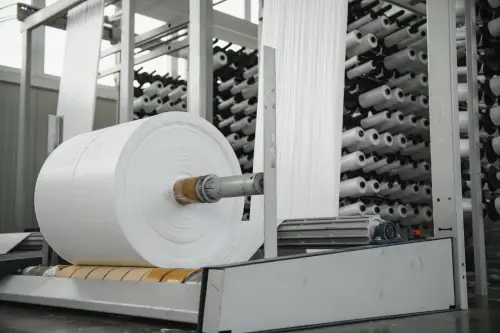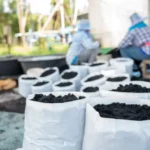Top trends in Fibc bags manufacturing

Introduction
Flexible Intermediate Bulk Containers (FIBCs), commonly known as bulk bags or big bags, have revolutionized the packaging industry with their ability to handle large quantities of materials efficiently. As technology and sustainability efforts evolve, so does the manufacturing of FIBC bags. In this blog, we’ll explore the top trends shaping the FIBC bags manufacturing landscape, from material advancements to eco-friendly innovations.
Advanced Materials for Enhanced Performance

Modern FIBC bags are incorporating advanced materials, such as coated and laminated fabrics, to enhance strength, durability, and resistance to environmental factors. These materials contribute to the bags’ ability to withstand the challenges of transporting and storing various bulk materials.
Anti-static and Conductive FIBCs
Industries dealing with sensitive materials, such as chemicals and pharmaceuticals, are increasingly opting for anti-static and conductive FIBC bags. These specialized bags help prevent static electricity buildup, ensuring the safety of both the product and the workers handling them.
Customization for Branding and Functionality
The demand for customized FIBC bags is on the rise. Manufacturers are offering branding opportunities with custom prints and designs. Additionally, tailored features, such as specialized closures, lifting options, and discharge mechanisms, are becoming more prevalent to meet specific industry requirements.
Focus on Sustainability
Sustainability is a driving force in FIBC manufacturing. Companies are increasingly incorporating eco-friendly materials and processes, such as recyclable fabrics and reduced carbon footprint manufacturing. This aligns with global efforts to reduce plastic waste and promote environmentally responsible practices.
Innovative Closure Systems
Closure systems are evolving to provide enhanced functionality and safety. Zipper closures, spout closures, and other innovative sealing mechanisms are gaining popularity for their convenience and ability to prevent product contamination.
Bulk Bag Liners and Liner Integration
To address specific storage and transportation needs, FIBC manufacturers are increasingly offering liners or integrating them into the bag design. Liners provide an additional layer of protection for the contents, making them suitable for a wider range of materials, including food products and fine powders.
Improved Quality Control and Testing
The industry is placing a greater emphasis on quality control and testing throughout the manufacturing process. From seam strength to weight capacity, rigorous testing ensures that FIBC bags meet or exceed industry standards, providing confidence in their reliability.
Conclusion
The FIBC bags manufacturing landscape is undergoing a transformation, driven by technological advancements, environmental consciousness, and a growing demand for customized solutions. As these trends continue to shape the industry, the future holds exciting possibilities for even more innovative and sustainable FIBC solutions.



